How to Crown lift a tree: stop trees shading your house
 Lee Burkhill: Award Winning Designer & BBC 1's Garden Rescue Presenters Official Blog
Lee Burkhill: Award Winning Designer & BBC 1's Garden Rescue Presenters Official Blog

It's a sad fact that an area the size of the UK is being lost each year worldwide to deforestation. Trees are being felled and cut down at an alarming rate. Now, even local UK councils are stealth tree felling claiming that their 'maintenance' costs outweigh trees' environmental benefits.
It's all too easy for homeowners to see trees as a nuisance. This is mainly down to the general lack of understanding of trees' vital roles such as carbon-storing and slowing down the flow of water in flood-risk areas. Rather than rushing for the chainsaw, we need to approach a much more measured approach to tree pruning.
One of the biggest complaints is that older, larger trees block out light from people's houses. The next step is usually having a tree surgeon turn up (or worse, a person with no arborist experience and an overly eager chainsaw) and cut down the tree entirely.
However, there's an easier, cheaper and more environmentally friendly way to reduce trees shading your house, which you can do yourself.
This article will show you how in a couple of hours, with some basic tools you can not only keep your beautiful trees but let more light in around them. It's a win for you and the environment.

A crown lift is the pruning technique of removing lower branches on a mature tree, which lifts the canopy or crown of the tree.
It's a really simple technique that is woefully underused in tree pruning.
In fact, crown pruning can often improve the health of your tree and surrounding plants due to the increase of light and air. Crown lift pruning of trees can also increase a tree's vigour by sending energy resources elsewhere, which helps to breathe life into an older unproductive tree.
I urge anyone thinking of cutting down a tree to think about a crown lift first, even if you do it to prove that the tree may need to be felled, if nothing else. You will be amazed by the difference a decent crown lift can provide.
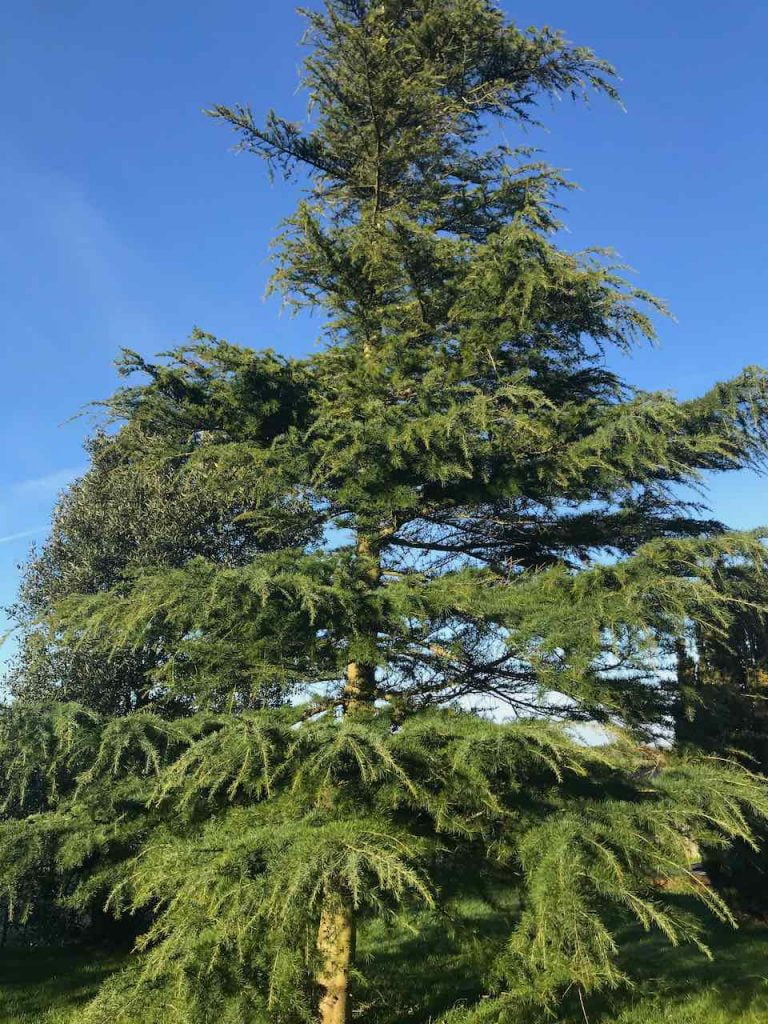
The Pine tree above is overcrowded because of its location. It's blocking light from a nearby lounge and makes it impossible to mow around it without doing the limbo underneath it.
Crown lifting is probably the easiest tree surgery as, in most cases, you won't need a ladder, scary power tools or complicated techniques. For the most part, crown lifting can be done with both feet firmly on the ground using a saw and some gloves.
Did you know that you can take my course and learn how to become a Garden Ninja yourself? Click here for details
If you have large mature trees in your garden you may find that they cast a shadow on your house or adjacent rooms, causing shade.
A crown lift will help bring more light in and give a better definition to the tree whilst still keeping the benefits the tree brings. A crown lift can be done on most types of trees. By removing the lower branches, you may be amazed at what a difference it makes inside the house and also to improve the shape of the tree.
It's always best to check the time of year to undertake tree pruning. As a rule of thumb, you want to prune *most trees during the winter when they are dormant. This also allows you to assess their branch structure easily as the leaves will have fallen.
With Evergreens, winter is a good time as the sap won't have risen yet so weeping and bleeding can be kept to a minimum. (*Certain trees require summer pruning such as Birch or Prunus to save bleeding or winter borne diseases, such as Silverleaf).
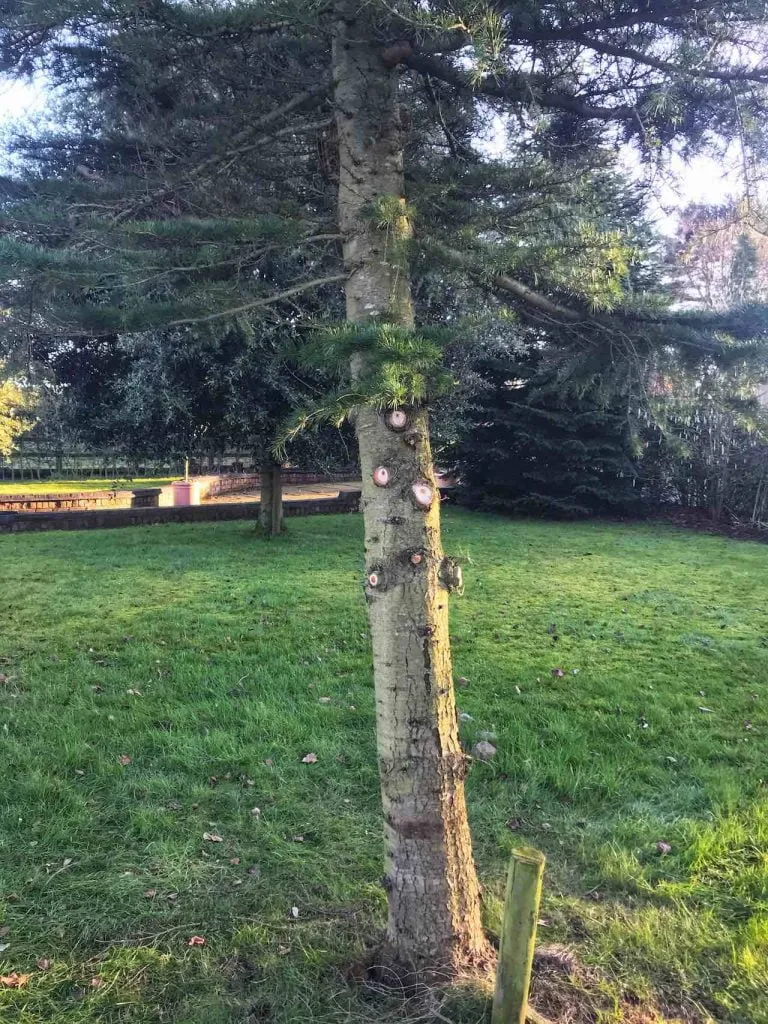
Lifting the Crown involves removing the lower branches, like this example above. It's super easy, and I will show you how.
New gardeners seem to be apprehensive about pruning and removing parts of trees. Maybe because without horticultural knowledge of botany, it can seem counterproductive. Pruning is actually one of the best ways to encourage growth in a plant. So rather than thinking of what you may lose, we need to start thinking about pruning as something you do to gain!
Before we start tree pruning, you're going to need a sharp saw and a pair of secateurs.
Make sure that both are clean, free from rust and in good working order. You may also need a pair of loppers for branches that are too thin to saw but too thick for secateurs.
It goes without saying that wearing gloves and some proper work shoes is essential. If in doubt, have a 'garden helper' hold branches for you and take care when handling sharp tools. Also, having a dog as a watchman is not essential but can make the process more fun!
The first step is to assess the tree and see how far up the tree trunk you need to take the crown lift. Is it just the bottom branches or a few layers that need to be removed?
In my example of this pine tree, I want to clear the bottom 3 - 4 branches so I can walk under to mow the lawn. I've also worked out this to allow enough light to enter the rooms and look into the garden.
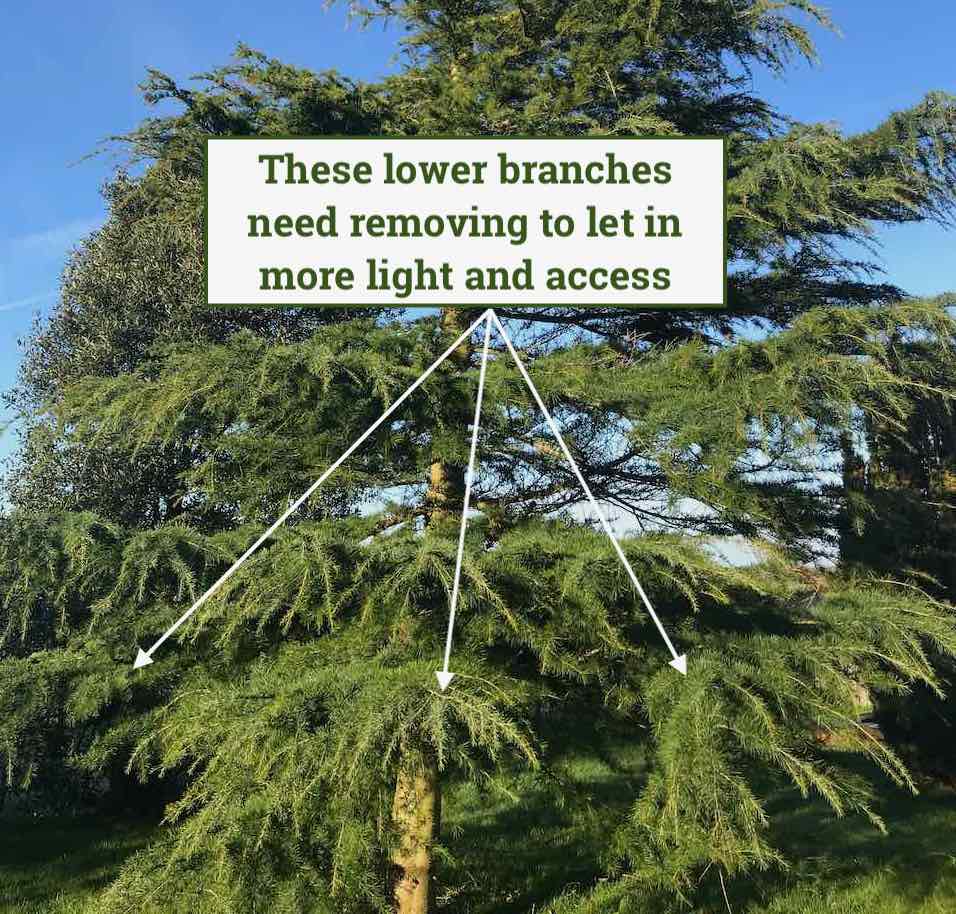
Take a step back and work out how much of the lower tree canopy needs to be removed.
Start by removing the bottom branches first. You'll want to use a wood saw for most branches, and the aim is to make clean, damage-free cuts.
Top Tip: Always cut the underside of the branch first up to 1/3 of the way through. Then flip the saw around and cut from the top. This prevents the weight of the branch from ripping away from the tree, causing damage.
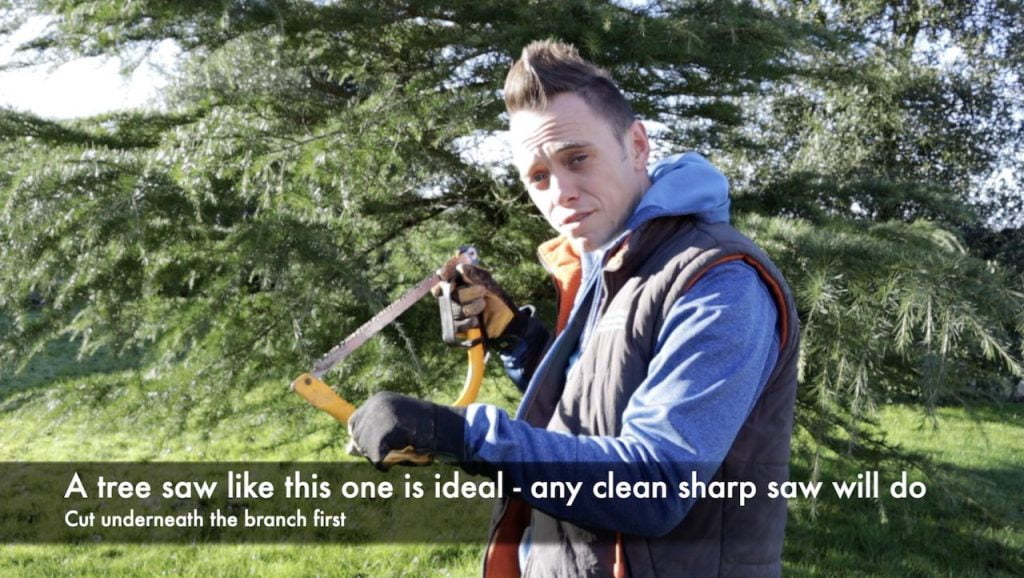
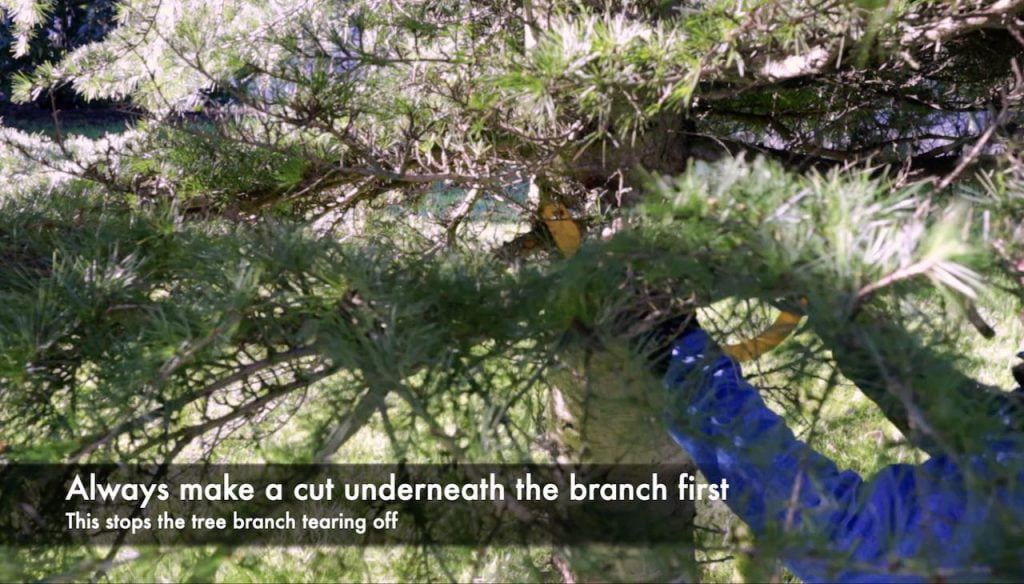
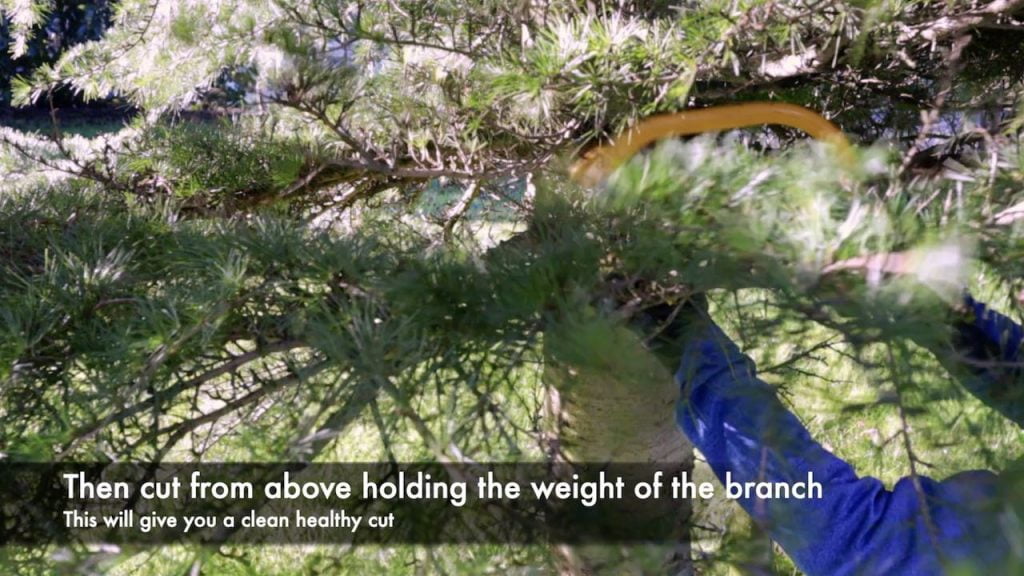
Ensure your cuts are clean and slightly angled so water can run off. Also, ensure you leave a small gap of 5mm before the main trunk. This is to stop any dieback or damage affecting the main trunk. This means that the wounds can dry up and heal correctly. It also stops you from inadvertently damaging the main tree if you slip with the saw.
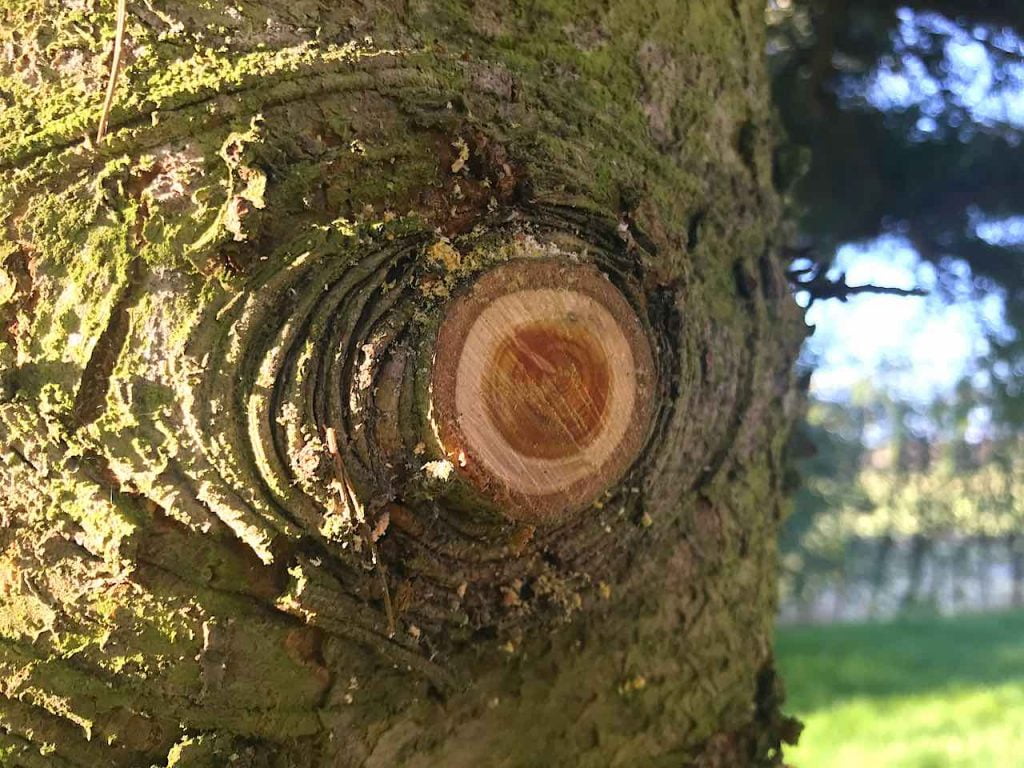
A clean pruning 'scar' that is slightly angled so water can run down and off. Don't be tempted to cut further into the tree; leave a small excess so it can dry out.
If you're cutting larger heavy branches, then make the cuts in stages. Do this by starting your cuts at the very tip of larger branches and taking off a third, then a third again until you're closer to the main tree trunk. By reducing the length before making the final cut, you're reducing the stress and weight of the branch. This helps reduce tearing or damage.
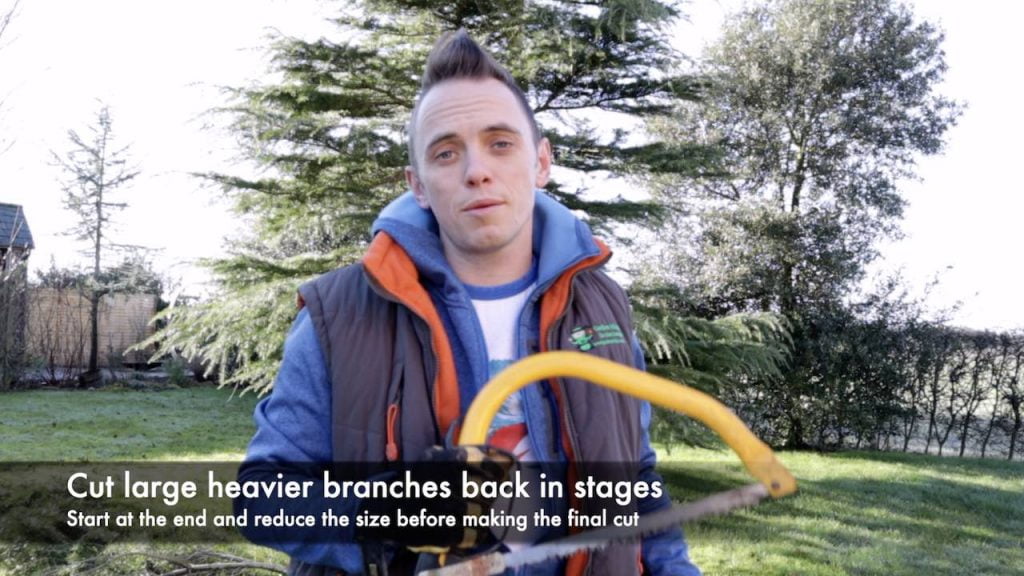
Stand back and assess the progress, ensuring you're keeping the tree's shape balanced. I find taking one of each side and alternating helps this. If not, you can end up with a wonky tree!
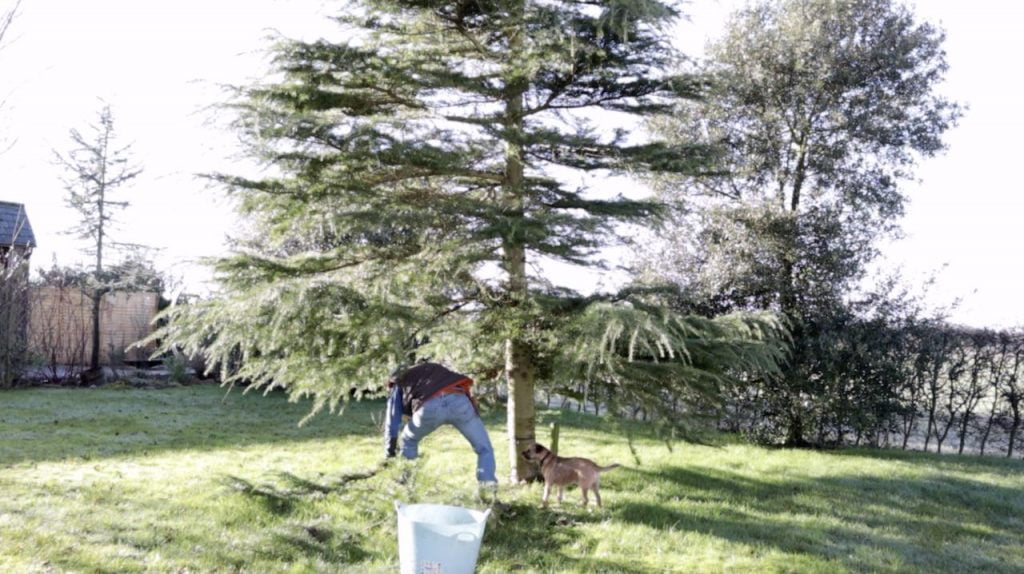
I prune off branches alternating from each side first to keep balance.
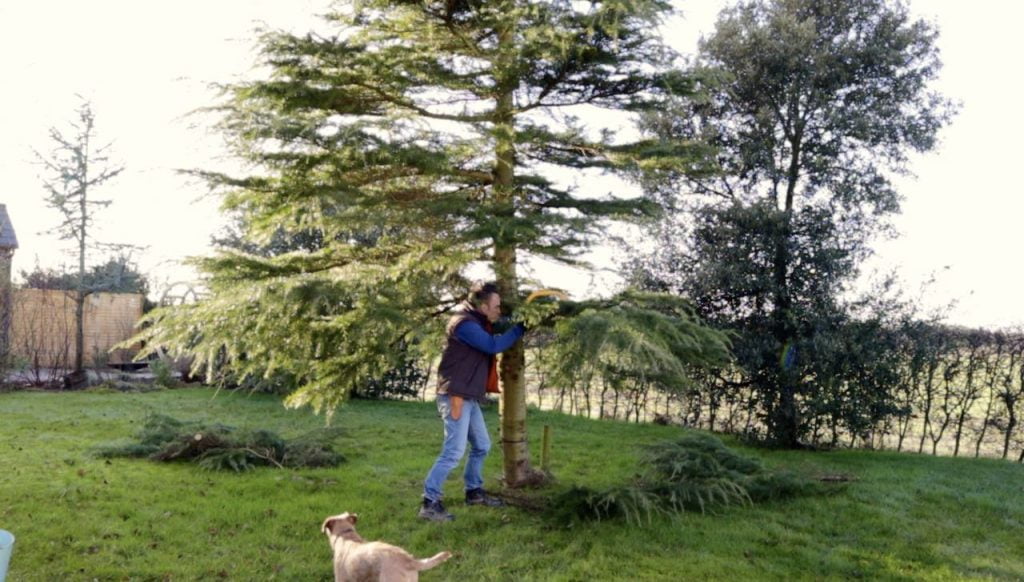
Keep standing back for perspective. See how much clearer the trunk is becoming as I crown lift this tree?
Once you're at the right level, then your crown lift is complete. The trimmings can then be dried to use as firewood or recycled. You can also use a chipper to shred the branches to make woodchips for garden paths or mulches. So there's zero waste!
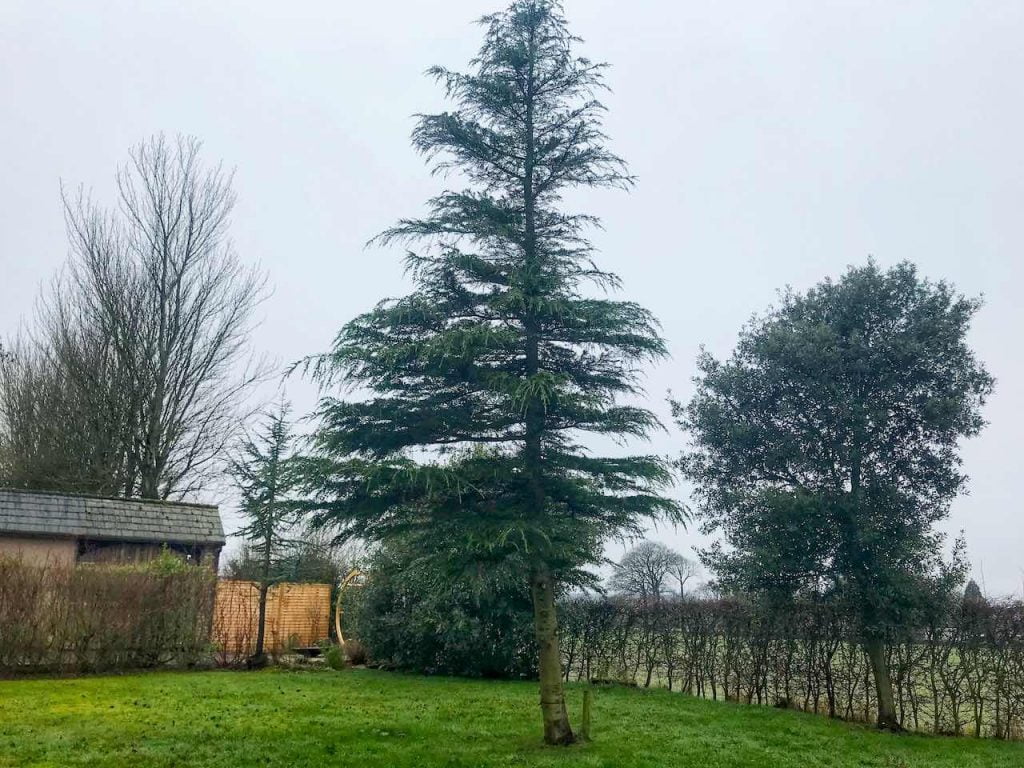
You may have gathered from this article that I'm a huge fan of trees in Garden Design. It saddens me to hear clients complaining of trees being too big or casting too much shade, leading to them then cutting the tree down. Trees are a massive store of the world's excess carbon. They lock away CO2 that our industrial world pumps out at an alarming rate—producing o2 in exchange for imprisoning this carbon.
If you think about how long it takes most trees to reach a mature size, between 10-30 years on average for most trees. Simply cutting them down leaves you with not only space you will need to fill, but all that effort has gone to waste. Wildlife relies on trees for shelter and food. Trees' roots anchor the ground and help slow down the movement of water, reducing the risk of flooding.
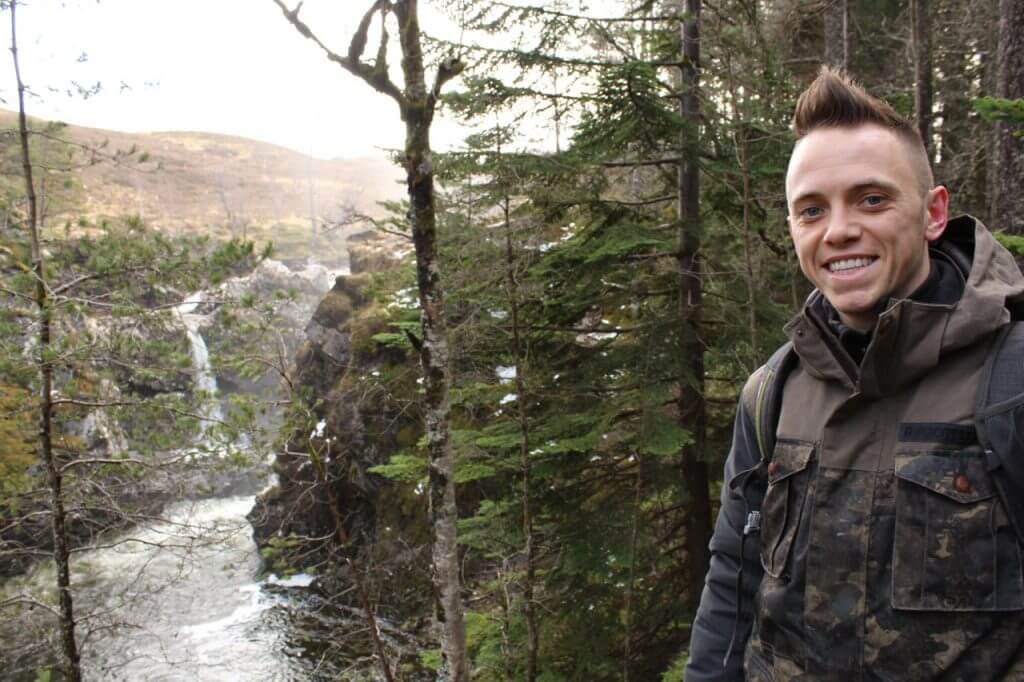
Trees are an essential part of our ecosystem. Just look at the variety behind me here in Scotland. Imagine this picture without trees?
Contrary to other urban myths, most tree roots are not going to uproot your house if they're planted at a sensible distance away. In most of the examples, it is usually user error in planting really vigorous trees within a foot or so of houses foundations or walls where subsidence can occur as the tree sucks the moisture out of the surrounding soil, causing movement.
No matter how much gardening experience you have we all have a shared duty to look after our environments. I hope that by reading this, you will give crown lifting a go before calling in a tree surgeon to remove a tree. Not only will you save yourself a fortune but you will also be giving mother nature a much-needed helping hand.
If you have questions or pruning comments why not let me know below? You can Tweet, Facebook or Instagram me. You can also follow me on Youtube where I’ve got plenty of garden guide vlogs!
Happy Pruning!


You must be logged in to post a comment.

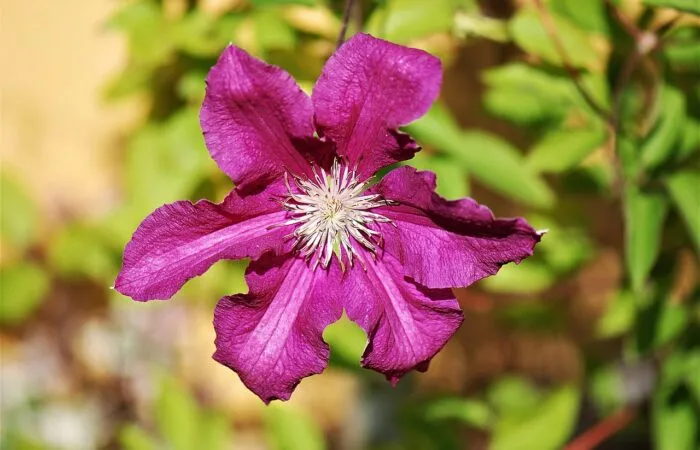
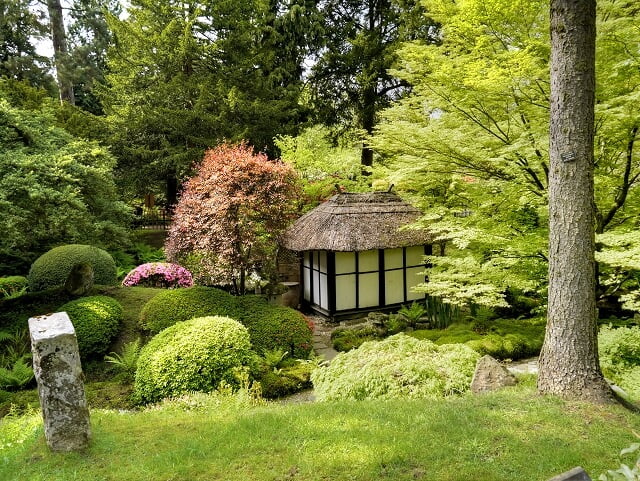
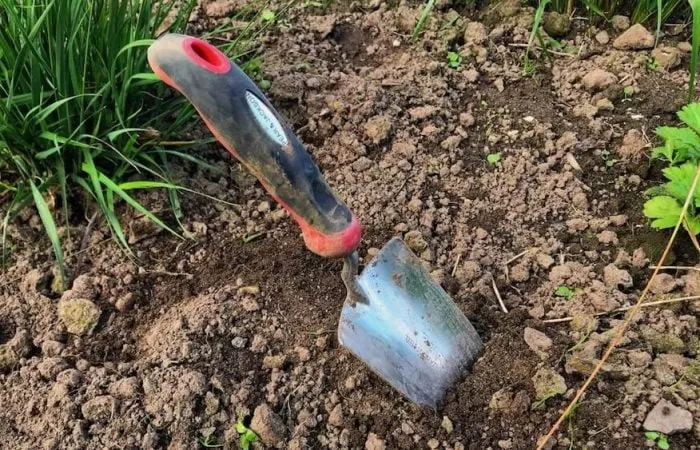
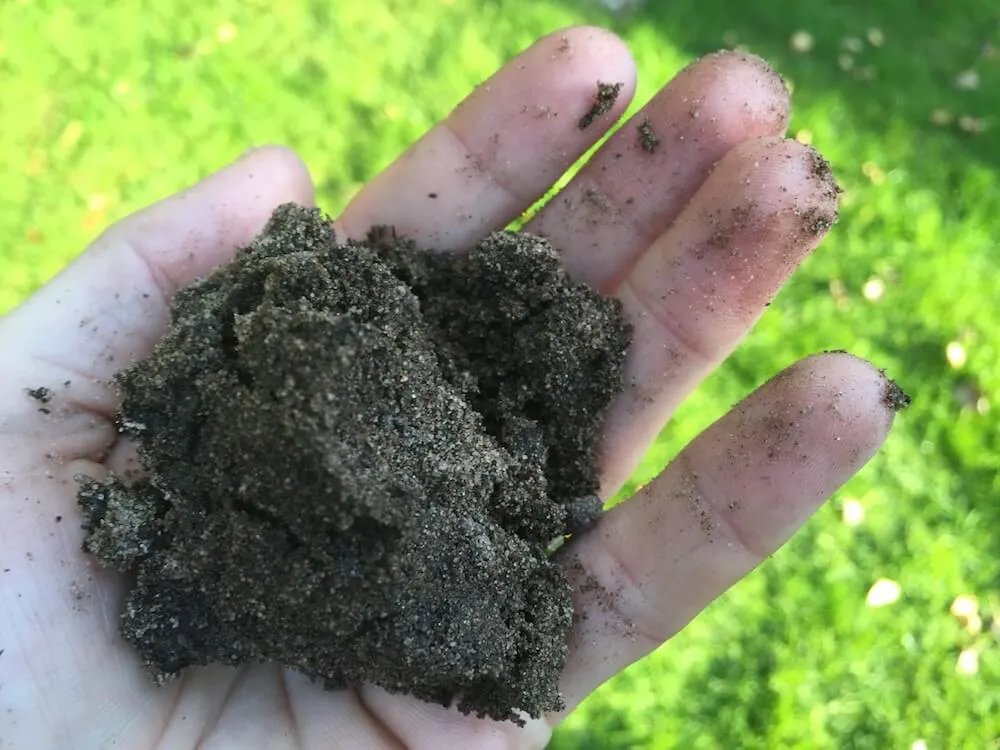

JOIN THE NINJAS

Be the first in line for new Guides, Discount codes and Offers
Really nice article.
Crown lifting is a great way to gain more light or to provide access underneath and will boost growth to the upper branches and stems.
How far up can you limb a tree in order to provide useful light for solar power installation on your roof. Here in the northwest United States, we have Hemlock, Douglas fir and cedar predominantly that grow to 150 —180 feet. So how much of a crown lifting can you do safely for the tree without causing it to die and yet provide sunlight on a second story of the house? Is it even feasible. ?
We walked through our forest neighborhood and saw many many self Limbing trees With only the crown 1/3 of the tree left . what causes natural limbing in the forest ? It is probably a fight for light right ?? The trees seem to get along just fine with a Third at the top, but is it safe for your property or does it create illness in the tree or perhaps even a wind vulnerable tree from only the third having been left?
what percentage would you say to be safe? 1/2 or less than a third ? is there any study on this ?
For instance, when we sail a boat in windy conditions, if the boat starts to heel over too far, we take down the main sheet and use the jib. It then tilts back where it should no longer be in danger of capsizing. Does this apply to trees also, I heard an Arborist in Seattle saying that too much pruning to make a “jib” would actually make it more likely to be blown over at the top and broken. Is this true ? it doesn’t seem correct to me as a sailor. I have studied fluid principles, and it would make sense that less resistance from the trees that are cut would allow the wind to go around the top and leave the tree alone. I have heard several people who prune trees all the time say that the ladder is correct . Again, are there any studies for this ? What is your opinion ? Thank you very much.